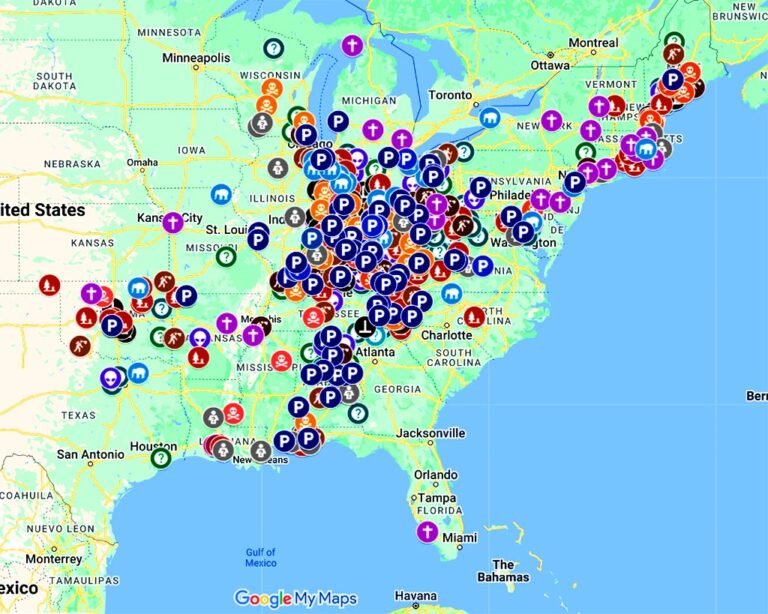Misinformation vs Disinformation
Misinformation refers to false or inaccurate information that is spread unintentionally, while disinformation involves the deliberate creation and spread of false information with the intent to mislead or deceive. This article examines the intricate framework of online falsehoods, how they spread, their impact on individuals and society, and effective strategies for combating them.
Have you ever scrolled through your social media feed, only to stumble upon a headline that seemed so outrageous, so shocking, that you just had to click? We’ve all been there. In today’s hyper-connected world, information travels at lightning speed, and discerning truth from fiction can feel like navigating a minefield.
Misinformation and disinformation are not new phenomena, but the internet and social media have supercharged their spread, transforming them into a formidable force with the potential to undermine trust, sow discord, and even influence elections.
Imagine a world where fabricated narratives, cleverly disguised as facts, manipulate public opinion, incite violence, and erode the very fabric of our democratic societies. It’s a chilling thought, and it’s happening right now, under our noses.
But here’s the good news: we’re not powerless against the tide of online falsehoods. By understanding the mechanics of misinformation, recognizing its allure, and equipping ourselves with the tools to critically evaluate information, we can become savvier consumers of online content and help stem the tide of digital deception.
In the age of manipulated media and rampant online falsehoods, developing and implementing effective strategies to combat misinformation and disinformation is not just important – it’s essential for safeguarding our individual and collective well-being, protecting democratic processes, and fostering a society built on truth and trust.
The Psychology of Deception: Why We Fall Prey to Misinformation
Why do we fall for fake news? It’s not simply a matter of intelligence or lack thereof; the answer lies in the intricate workings of our brains, our emotional responses, and the cognitive biases that shape our perception of the world.
- Cognitive Biases: Our brains are wired to seek patterns, make quick judgments, and rely on mental shortcuts. This can lead to cognitive biases that make us susceptible to misinformation. For example, confirmation bias leads us to favor information that aligns with our existing beliefs, even if it’s demonstrably false. [1]
- Emotional Appeal: Misinformation often plays on our emotions, triggering fear, anger, or outrage, which can make us more likely to believe and share false information without critical evaluation. [2]
- The Power of Repetition: Repeated exposure to false information, even if we initially dismiss it, can increase its believability over time. This is known as the illusory truth effect. [3]
- Social Influence: We are social creatures, and we tend to trust information shared by our friends, family, and social networks. This can create echo chambers where misinformation spreads unchecked within like-minded groups.
- Lack of Media Literacy: Many individuals lack the skills and knowledge to critically evaluate information sources, distinguish credible information from misleading content, and identify common manipulation techniques. [4]
- Fun Fact: A study by Stanford University researchers found that even highly educated students struggled to distinguish credible news sources from fake ones.
- The Information Overload: In today’s digital world, we’re bombarded with information from all directions. This information overload can make it difficult to filter out noise, evaluate sources, and make informed decisions.
The “Clickbait” Effect: Attention-grabbing headlines, designed to evoke curiosity or outrage, are often used to draw users in and spread misinformation. The desire for novelty, amusement, or validation can override our critical thinking skills.
The Arsenal of Deception: Tactics Used to Spread Misinformation
Misinformation doesn’t spread randomly. It’s often carefully crafted and strategically disseminated using a variety of tactics aimed at manipulating our emotions, exploiting our biases, and hijacking our attention.
- Fabricated Content: Completely made-up stories, often designed to go viral and evoke emotional responses, are a common form of misinformation. These stories may be designed to discredit individuals, promote conspiracy theories, or simply generate clicks and ad revenue.
- Manipulated Content: Authentic content can be altered or taken out of context to create a misleading narrative. This may involve doctoring images, editing videos, or selectively quoting individuals to distort their message.
- Imitation or Impersonation: Fake websites or social media accounts designed to resemble legitimate news sources are used to spread misinformation, capitalizing on the trust associated with established brands.
- Bots and Trolls: Automated accounts (bots) and individuals (trolls) are often used to amplify misinformation, creating an illusion of widespread support for false narratives and influencing online conversations.
- Microtargeting: Social media platforms allow for highly targeted advertising, enabling the spread of misinformation to specific groups based on their interests, demographics, or political leanings. This can create echo chambers where false information is reinforced and unchallenged. [5]
- The Weaponization of Emotion: Misinformation often exploits our emotions to gain traction. Fearmongering, outrage, and sensationalism are powerful tools for capturing attention, bypassing critical thinking, and prompting impulsive sharing. [6]
The Algorithm Effect: Social media algorithms, designed to keep users engaged, often prioritize content that is likely to evoke emotional responses, which can inadvertently contribute to the spread of misinformation. These algorithms are like digital echo chambers, feeding us information that aligns with our existing beliefs and biases. [7]
The Cost of Deception: Consequences of Misinformation
Misinformation and disinformation are not harmless pranks or online shenanigans. They have real-world consequences, impacting individuals, communities, and society as a whole.
- Erosion of Trust: Misinformation undermines trust in institutions, experts, and even factual information, creating a climate of skepticism and cynicism that makes it difficult to address important societal issues. [8]
- Political Polarization: Misinformation often exacerbates political polarization, dividing communities and societies along ideological lines, hindering constructive dialogue, and potentially contributing to political instability. [9]
- Public Health Risks: Misinformation related to health issues, such as vaccines or pandemics, can have devastating consequences. It can lead individuals to make harmful decisions about their health or spread dangerous practices that put others at risk. The spread of misinformation about vaccines has led to a resurgence of preventable diseases, costing lives and jeopardizing public health. [10]
- Economic Damage: Misinformation can damage businesses, spread financial scams, and even disrupt financial markets. The spread of false information about companies or products can cause reputational harm, impact stock prices, and erode consumer confidence.
- The “Fake News” Effect on Journalism: The rise of misinformation has eroded public trust in journalism, making it challenging for legitimate news organizations to report accurately and combat falsehoods.
The Societal Cost of Cynicism: When people lose trust in information sources, they become more susceptible to conspiracy theories, extremist ideologies, and manipulative narratives, creating fertile ground for social division and instability. [11]
Fighting Back: Effective Strategies for Combating Misinformation
The battle against misinformation and disinformation requires a multi-pronged approach, involving individual vigilance, responsible platform governance, educational initiatives, and robust fact-checking efforts.
- Develop Critical Thinking Skills: Educating individuals on how to identify misinformation, evaluate sources, and recognize common manipulation techniques is crucial for empowering people to become savvy consumers of online content.
- Fun Fact: The term “critical thinking” has its roots in ancient Greek philosophy, highlighting the importance of questioning assumptions and evaluating evidence.
- Promote Media Literacy: Initiatives aimed at increasing media literacy, including programs in schools and universities, can equip individuals with the skills to navigate the complex digital information landscape and discern truth from fiction.
- Responsible Platform Governance: Social media platforms have a responsibility to address the spread of misinformation on their platforms. This includes removing or labeling misleading content, reducing the reach of accounts that spread falsehoods, and fact-checking disputed information. [12]
- Empowering Users to Report Misinformation: Platforms should provide users with easy-to-use mechanisms for reporting suspicious content and flagging potential misinformation. This can help identify and address harmful content more quickly and effectively.
- Supporting Independent Fact-Checking Organizations: Independent fact-checking organizations play a crucial role in debunking false claims and holding individuals and institutions accountable for spreading misinformation.
- Promoting Transparent Advertising Practices: Transparency in online advertising practices can help reduce the spread of misinformation through paid channels. This includes requiring platforms to disclose the source of funding for political advertising and revealing the targeting criteria used for ad campaigns. [13]
- Government Regulations: Some governments are exploring regulations aimed at curbing the spread of harmful misinformation online. This raises complex questions about freedom of speech, government overreach, and the potential for censorship.
Individual Responsibility: We all have a role to play in combating misinformation. Before sharing information online, take a moment to consider its source, check for evidence, and be wary of content that elicits strong emotional responses.
The Challenges: Addressing the Evolving Landscape of Misinformation
The fight against misinformation is an ongoing battle against an ever-evolving adversary. New tactics, technologies, and platforms emerge constantly, requiring continuous adaptation and innovation in our counter-strategies.
- The Sophistication of Misinformation: Misinformation is becoming increasingly sophisticated, utilizing techniques like deepfakes, AI-generated content, and microtargeted propaganda to create highly persuasive and difficult-to-detect falsehoods.
- The “Filter Bubble” Effect: Social media algorithms often create “filter bubbles,” where users are primarily exposed to content that aligns with their existing beliefs, reinforcing biases and making it difficult to encounter alternative viewpoints or factual information that challenges their assumptions. [14]
- The Weaponization of Trust: Misinformation often exploits trust networks, spreading through family, friends, and communities, making it more difficult to combat. People are more likely to believe false information when it comes from someone they know and trust.
- The Global Nature of Misinformation: Misinformation knows no borders, spreading rapidly across geographical boundaries and cultures, making it challenging to coordinate responses and enforce regulations.
The Constantly Evolving Landscape: New social media platforms, communication technologies, and online communities emerge constantly, presenting new challenges and requiring ongoing adaptation in our efforts to combat misinformation.
Additional Strategies to Combat Misinformation and Disinformation
As technology advances, the need for adaptable and innovative methods for combatting misinformation is paramount. Several strategies are emerging:
- Leveraging Artificial Intelligence: AI algorithms can be trained to identify patterns of misinformation, detect fake accounts, and flag potentially misleading content, providing a valuable tool for both social media platforms and researchers.
- Collaborative Fact-Checking Networks: Creating collaborative networks that connect journalists, fact-checkers, and researchers can help share information, identify emerging trends, and coordinate efforts to debunk misinformation more quickly and effectively.
- Developing Media Literacy Curricula for All Ages: Integrating media literacy into school curricula at all levels can help future generations develop critical thinking skills and navigate the complex digital information landscape with discernment.
- Promoting Responsible Media Consumption: Encouraging individuals to diversify their media sources, seek information from reputable outlets, and engage in respectful dialogue with those holding different viewpoints can foster a more balanced and informed public discourse.
- Addressing the Root Causes: Tackling the root causes of misinformation, including social inequality, political polarization, and economic hardship, can create a more resilient society less susceptible to manipulation and division.
- Fostering a Culture of Open Dialogue: Creating spaces for open and respectful dialogue about challenging issues, even those on which we disagree, can help bridge divides and promote a more nuanced understanding of complex problems.
Conclusion
Misinformation and disinformation pose a significant threat to our individual and collective well-being, jeopardizing public health, eroding trust in institutions, and potentially undermining democratic processes.
But the fight against misinformation is not a lost cause. By understanding the allure of online falsehoods, developing critical thinking skills, demanding responsible platform governance, and promoting media literacy, we can become savvy navigators of the digital information landscape.
The battle against misinformation is not a one-time fix; it’s an ongoing journey that requires continuous adaptation, innovation, and a collective commitment to truth and trust.
Let’s empower ourselves with knowledge, challenge falsehoods, and work together to create a digital world where accurate information thrives, and informed decision-making prevails.
The fight for truth starts with each of us.
References
[1] Nickerson, R. S. (1998). Confirmation bias: A ubiquitous phenomenon in many guises. Review of general psychology, 2(2), 175-220.
[2] Brady, W. J., Crockett, M. J., & Van Bavel, J. J. (2020). Emotion shapes the diffusion of moralized content in social networks. Proceedings of the National Academy of Sciences, 117(28), 16088-16093.
[3] Hasher, L., Goldstein, D., & Toppino, T. (1977). Frequency and the conference of referential validity. Journal of verbal learning and verbal behavior, 16(1), 107-112.
[4] Breakstone, J., Smith, M., Wineburg, S., McGrew, S., Ortega, T., & Fisher, M. (2019). Students’ Civic Online Reasoning: A National Portrait. Stanford History Education Group.
[5] Zuiderveen Borgesius, F. J., Möller, J., Kruikemeier, S., Ó Fathaigh, R., Irion, K., Dobber, T., … & de Vreese, C. H. (2020). Online political microtargeting: Promises and threats for democracy. Utrecht Law Review, 16(1), 82-97.
[6] Vosoughi, S., Roy, D., & Aral, S. (2018). The spread of true and false news online. Science, 359(6380), 1146-1151.
[7] Tufekci, Z. (2015). Algorithmic harms beyond Facebook and Google: Emergent challenges of computational agency. Colorado Technology Law Journal, 13, 203.
[8] Nielsen, R. K., & Graves, L. (2017). News you don’t believe: How increasing media distrust is changing the news media and the political process. Reuters Institute for the Study of Journalism.
[9] Boxell, L., Gentzkow, M., & Shapiro, J. M. (2020). Cross-country trends in affective polarization. National Bureau of Economic Research.
[10] Larson, H. J., Jarrett, C., Eckersberger, E., Smith, D. M. D., & Paterson, P. (2014). Measuring vaccine confidence: Introducing a global survey instrument. European Journal of Public Health, 24(4), 656–661.
[11] Uscinski, J. E., & Parent, J. M. (2014). American conspiracy theories. Oxford University Press.
[12] Gillespie, T. (2018). Custodians of the internet: Platforms, content moderation, and the hidden decisions that shape social media. Yale University Press.
[13] European Commission. (2018). Code of Practice on Disinformation.
[14] Pariser, E. (2011). The filter bubble: What the Internet is hiding from you. Penguin.





















This makes me think about all that AI-generated nonsense you see online. It’s like those websites spewing out fake news without any human lookin’ at it first. They make it sound real convincing, but it’s really just a whole lot of bad stuff, whether it’s spin or a flat-out lies.
This article makes me think about how a bunch of automated accounts just drop their stories. It’s like some of these online ‘news’ places that don’t do any real fact-checking at all. If a piece of info is too slick and easy to swallow, that’s when you really need to be careful, ’cause there might be some kinda hidden agenda.